Understanding fractions Geometry Worksheets for Ages 5-8
36 filtered results
-
From - To
Unlock your child's mathematical potential with our "Understanding Fractions Geometry Worksheets for Ages 5-8." Designed to build a strong foundation in both fractions and geometry, these engaging worksheets use fun, interactive activities to enhance learning and retention. Our expertly crafted exercises help young learners relate geometry shapes to fractions, ensuring a comprehensive understanding of parts and wholes. Perfectly tailored for children aged 5-8, these worksheets make learning fractions an exciting adventure, fostering confidence and a love for math. Boost your child's skills effortlessly with our easy-to-follow, printable worksheets available for instant download.
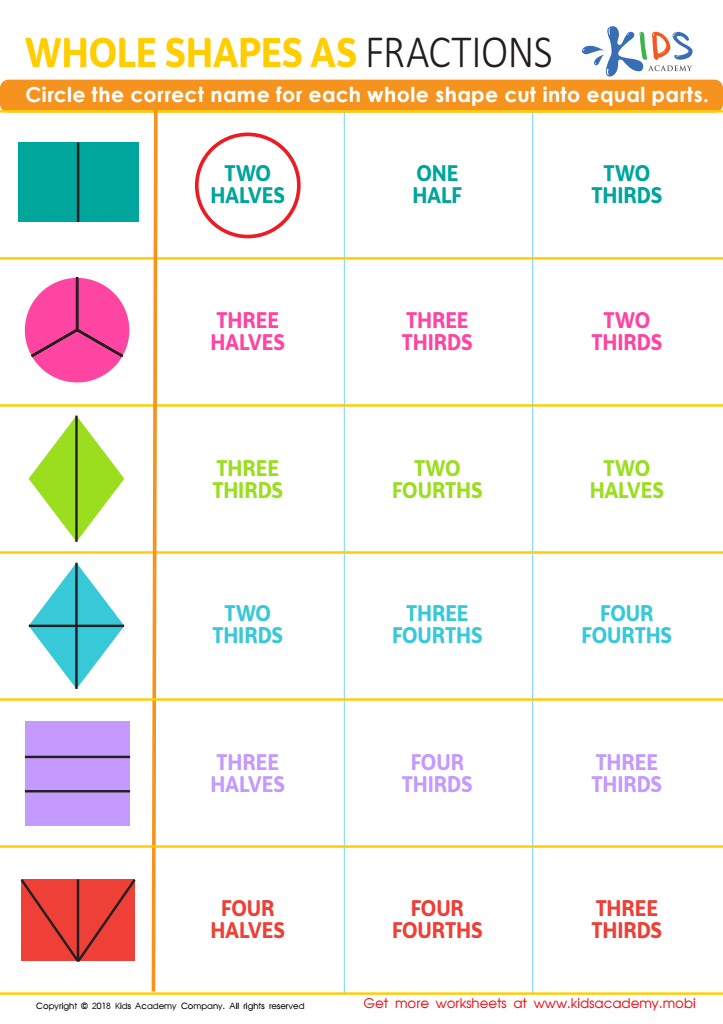

Whole Shapes as Fractions Worksheet
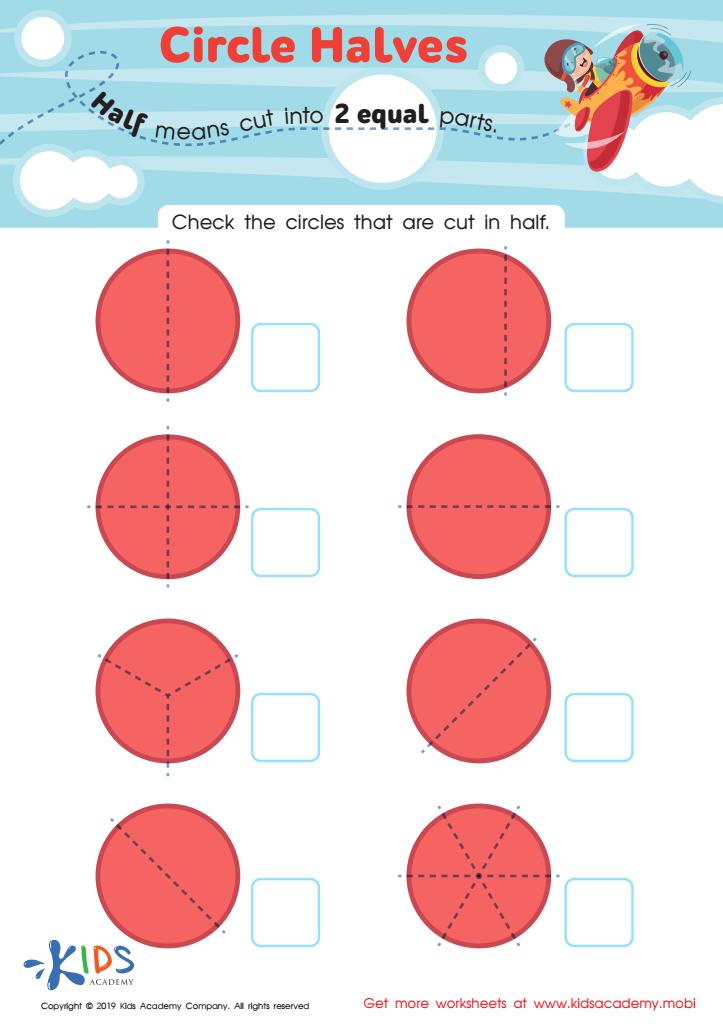

Circle Halves Worksheet
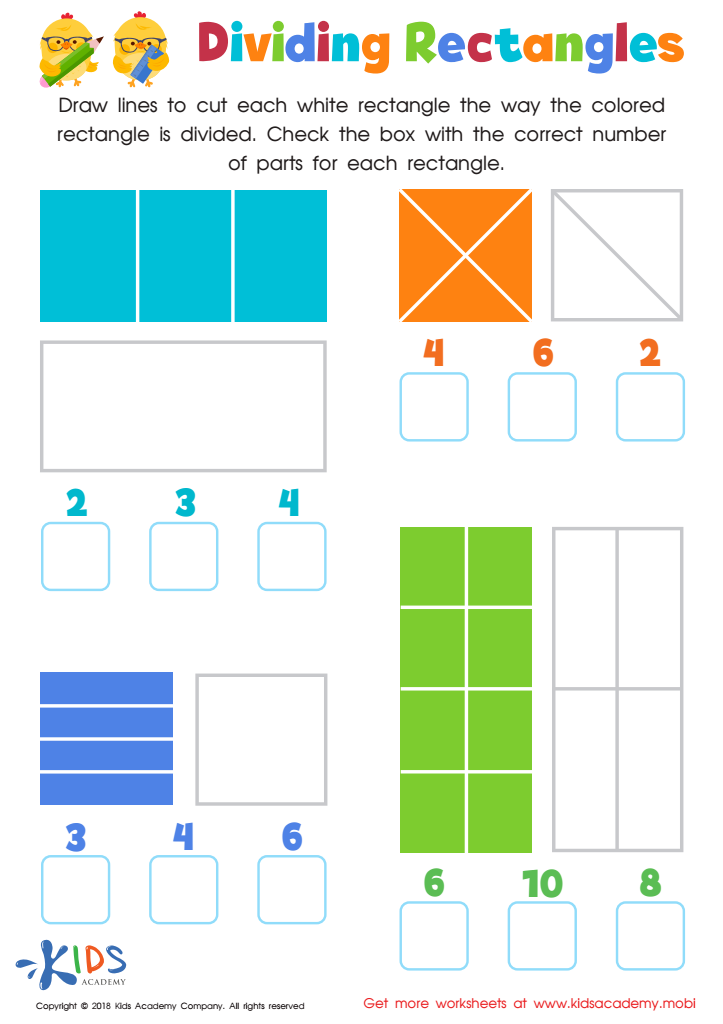

Dividing Rectangles Worksheet
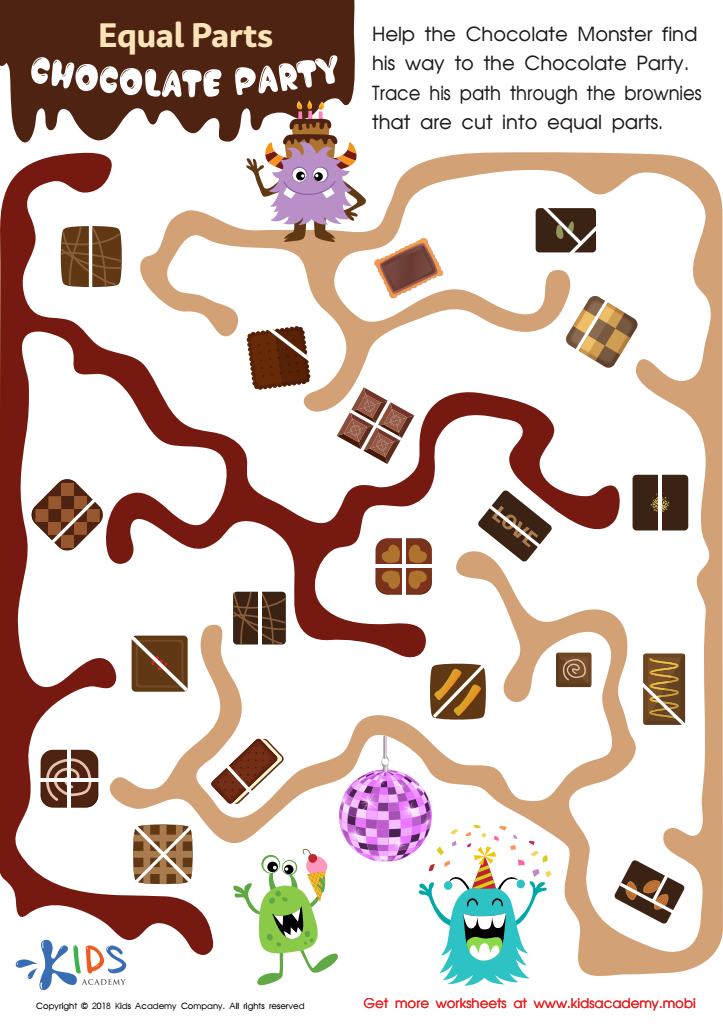

Equal Parts: Chocolate Party Worksheet


Halves and Wholes on the Clock Worksheet
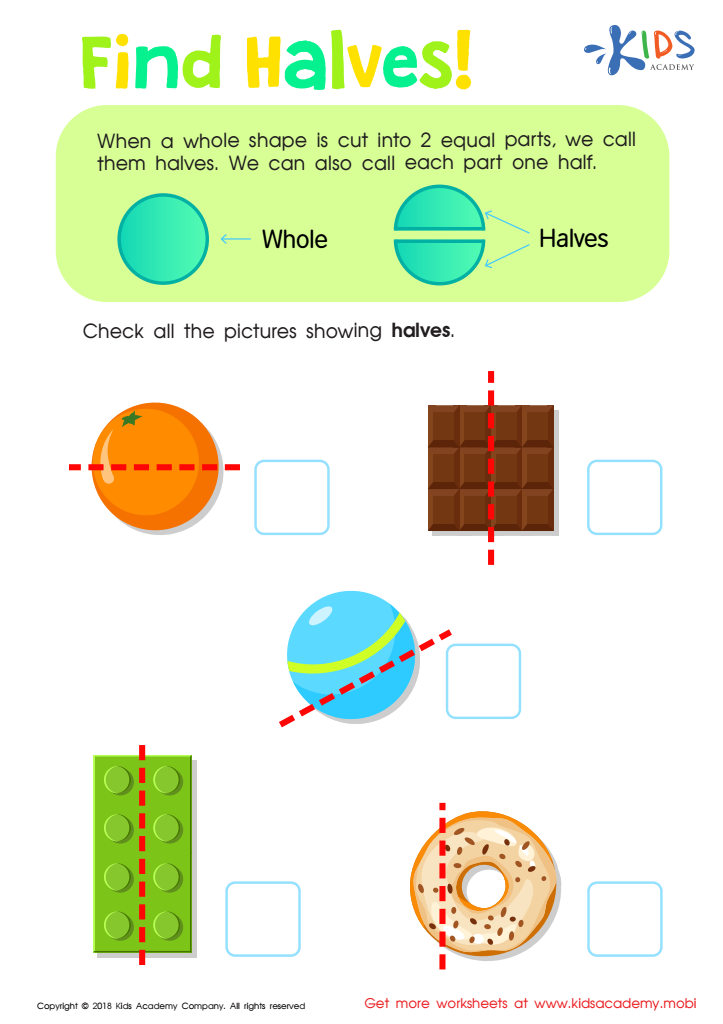

Find Halves Worksheet
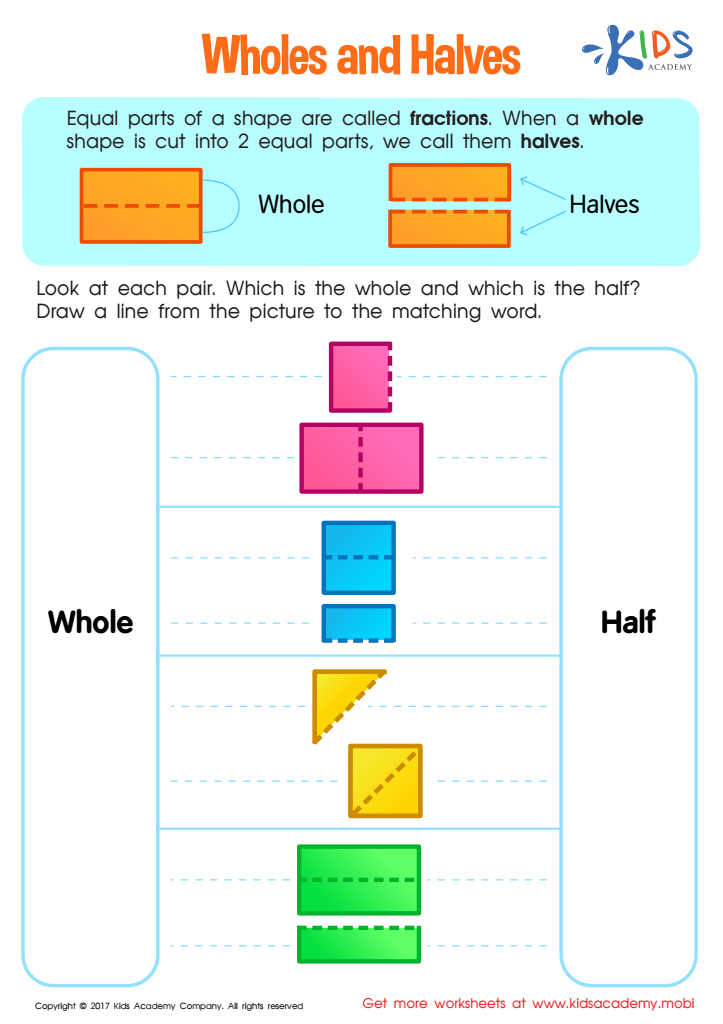

Wholes and Halves Worksheet
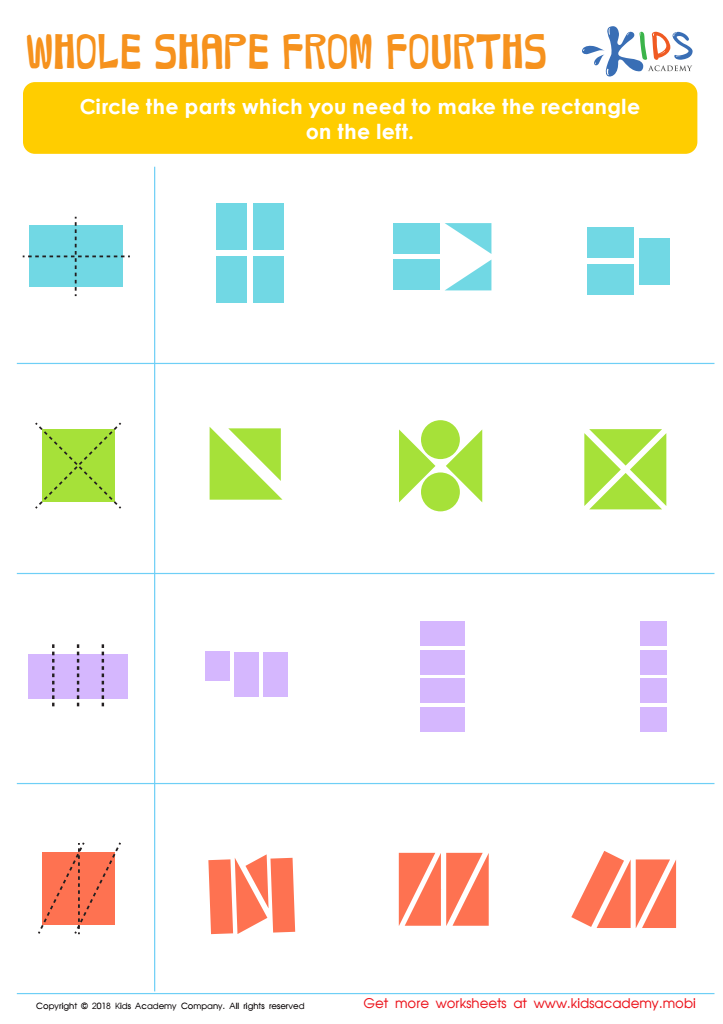

Whole Shape from Fourths Worksheet
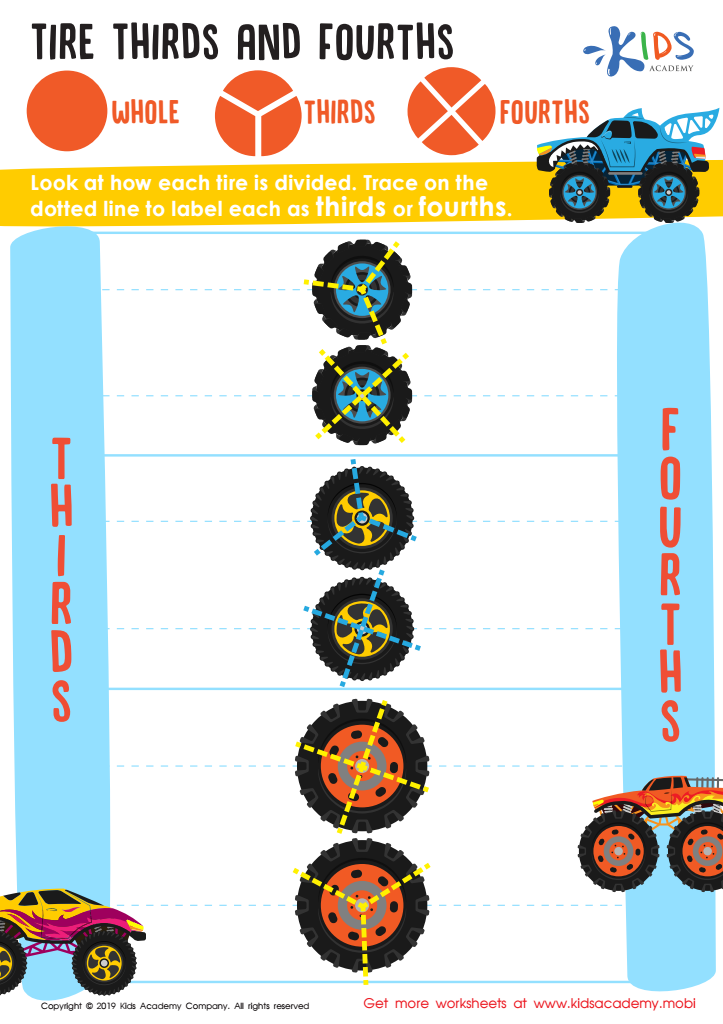

Tire Thirds and Fourths Worksheet
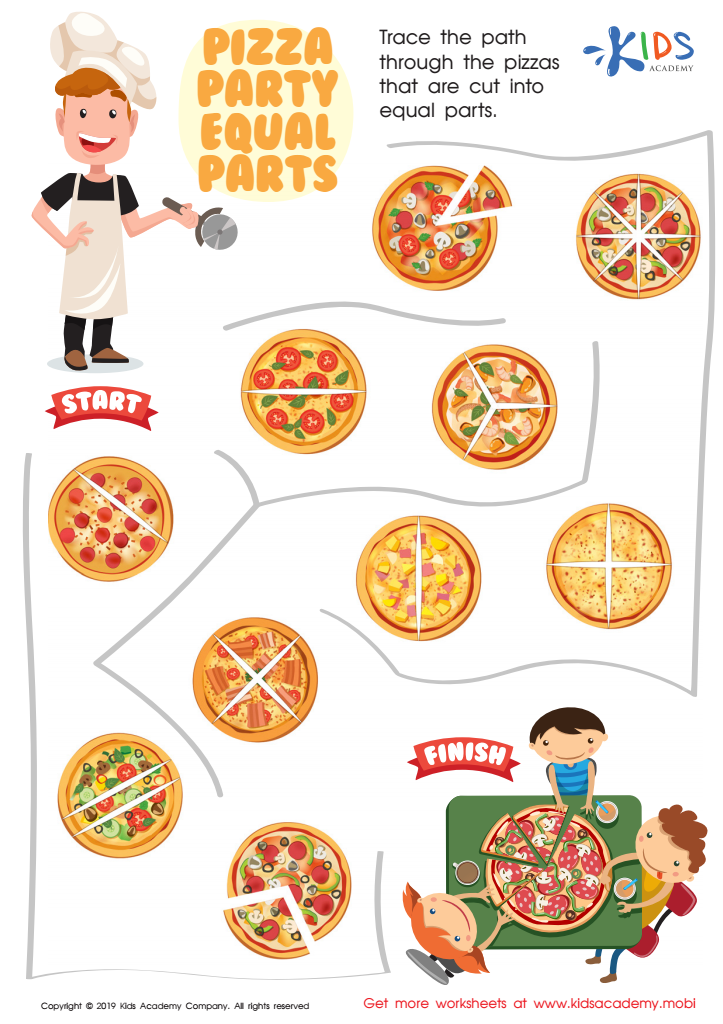

Pizza Party Equal Parts Worksheet
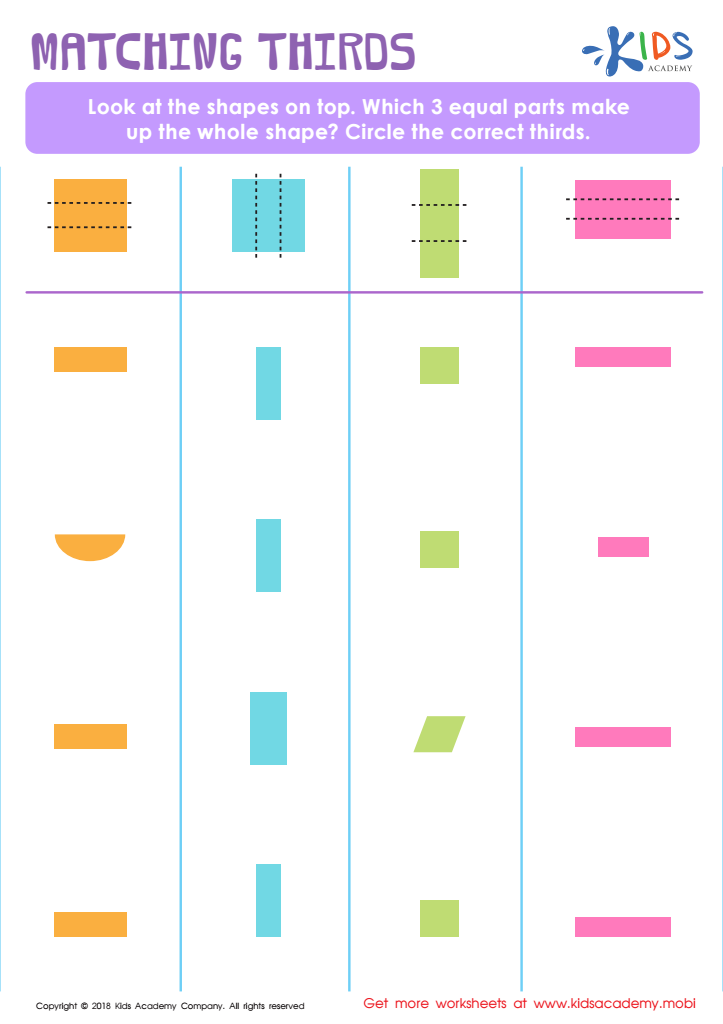

Matching Thirds Worksheet
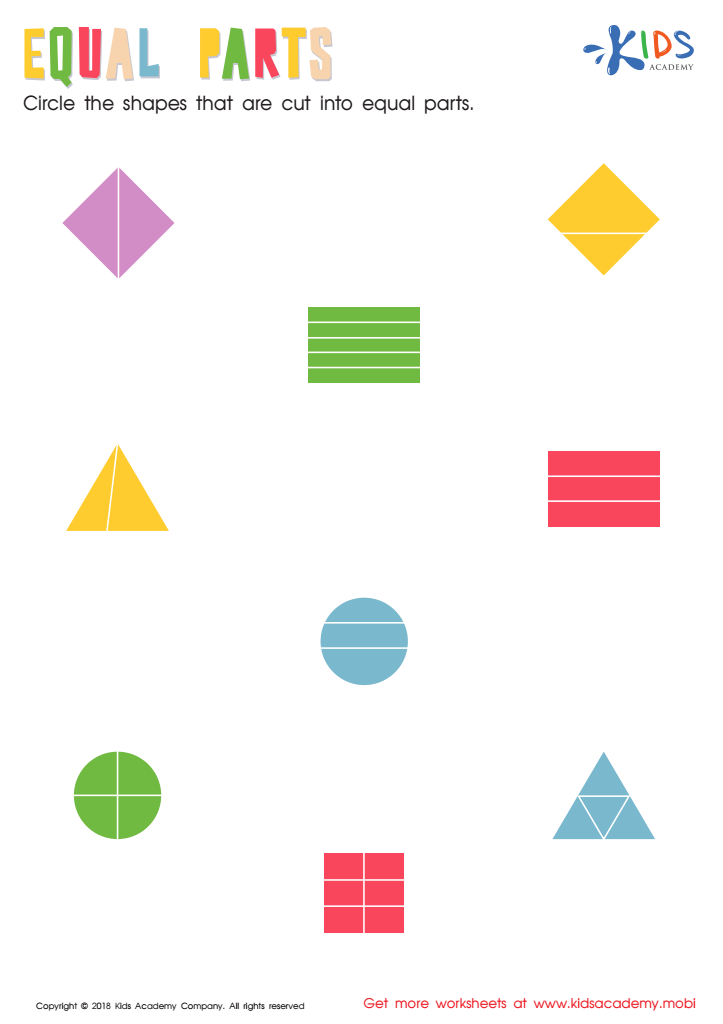

Equal Parts: Shapes Worksheet
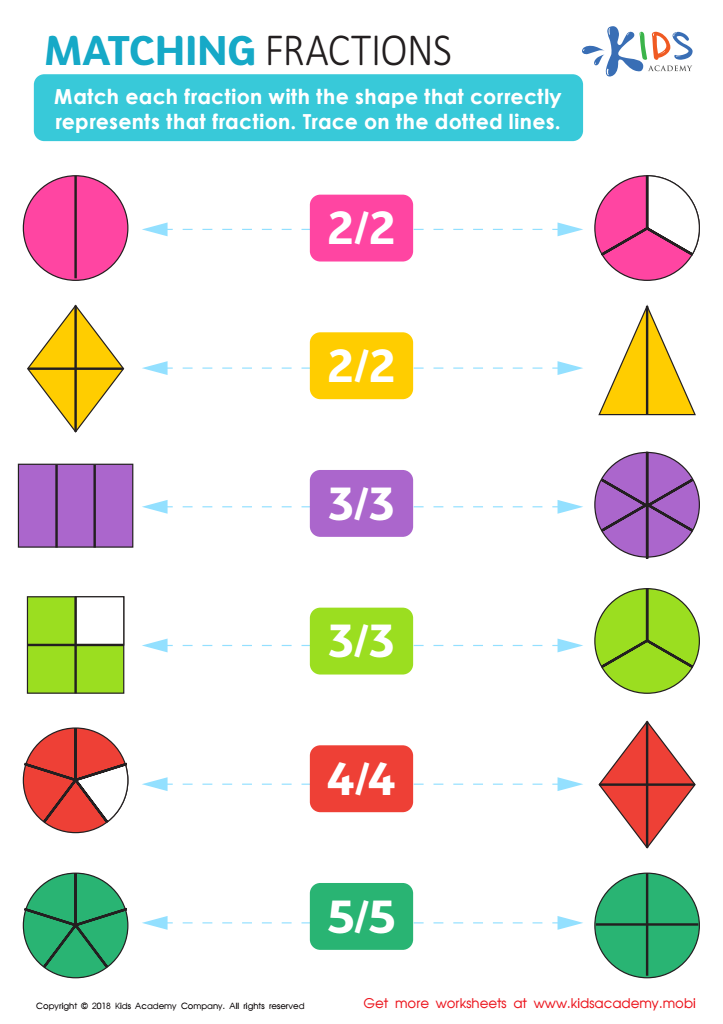

Matching Fractions Worksheet


Fractions: Shapes Worksheet
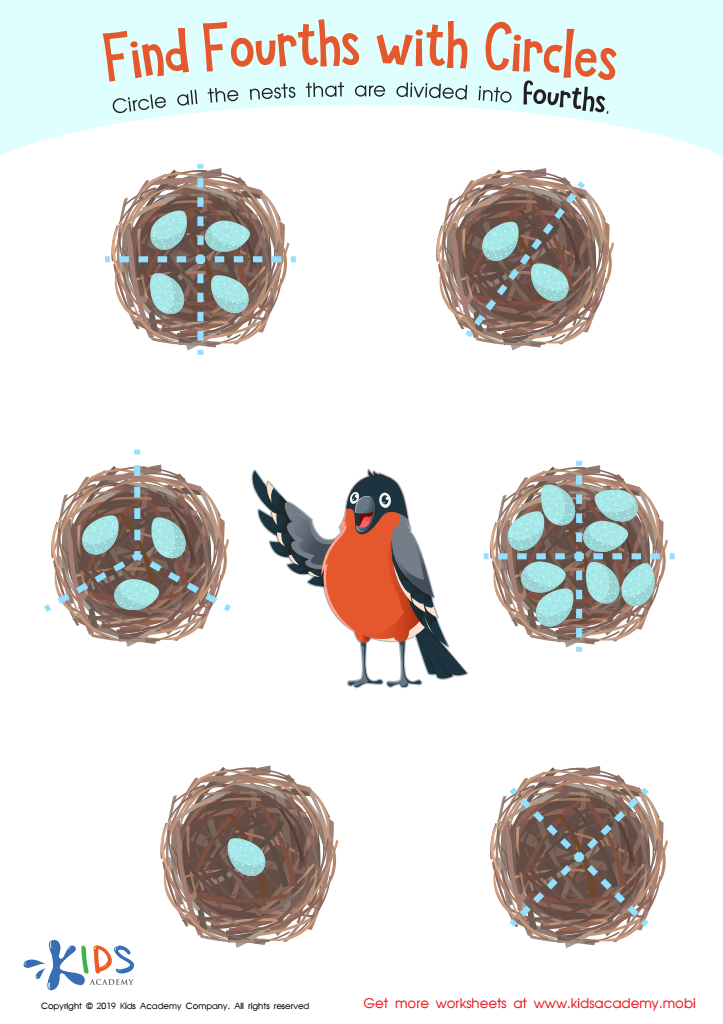

Find Fourths Circles Worksheet
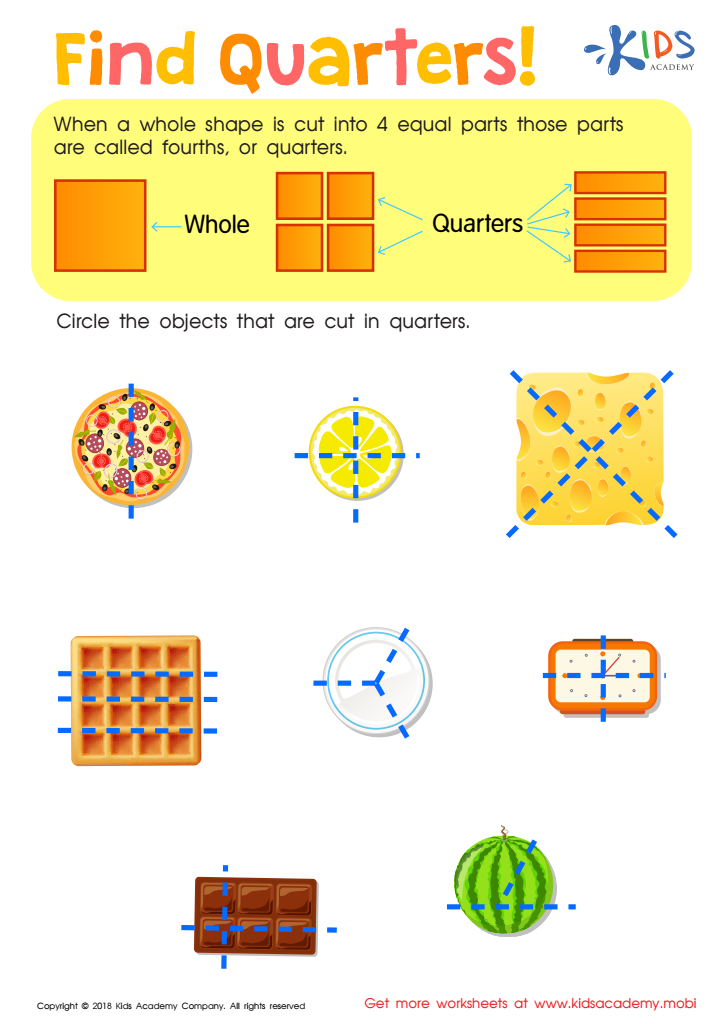

Find Quarters Worksheet
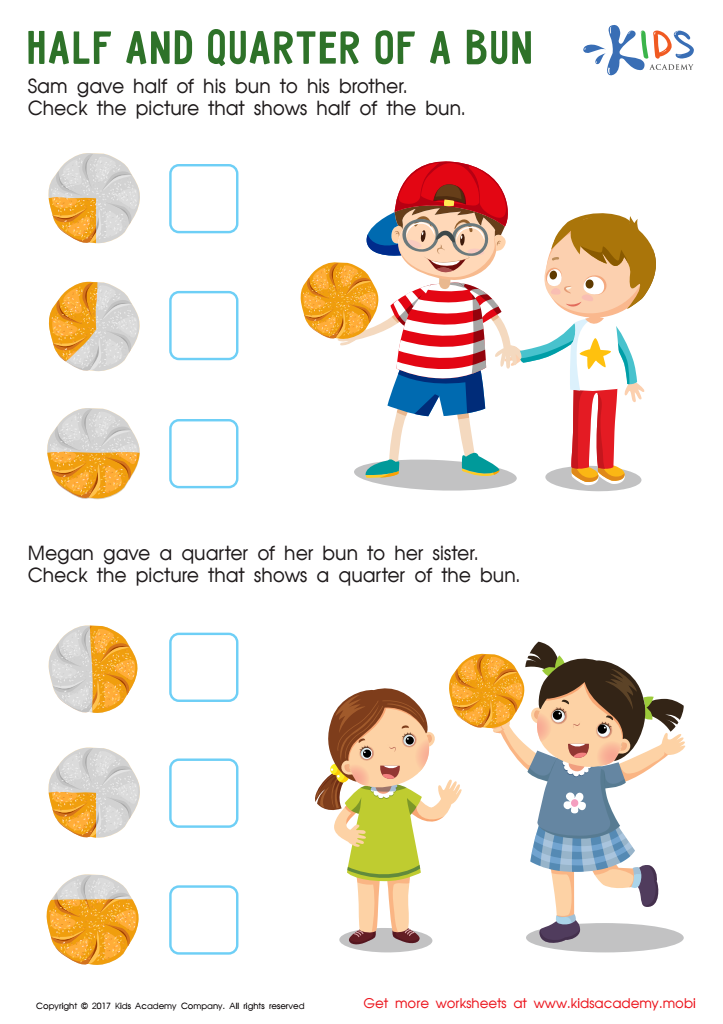

Half and Quarter of a Bun Worksheet


Match Fractions Worksheet
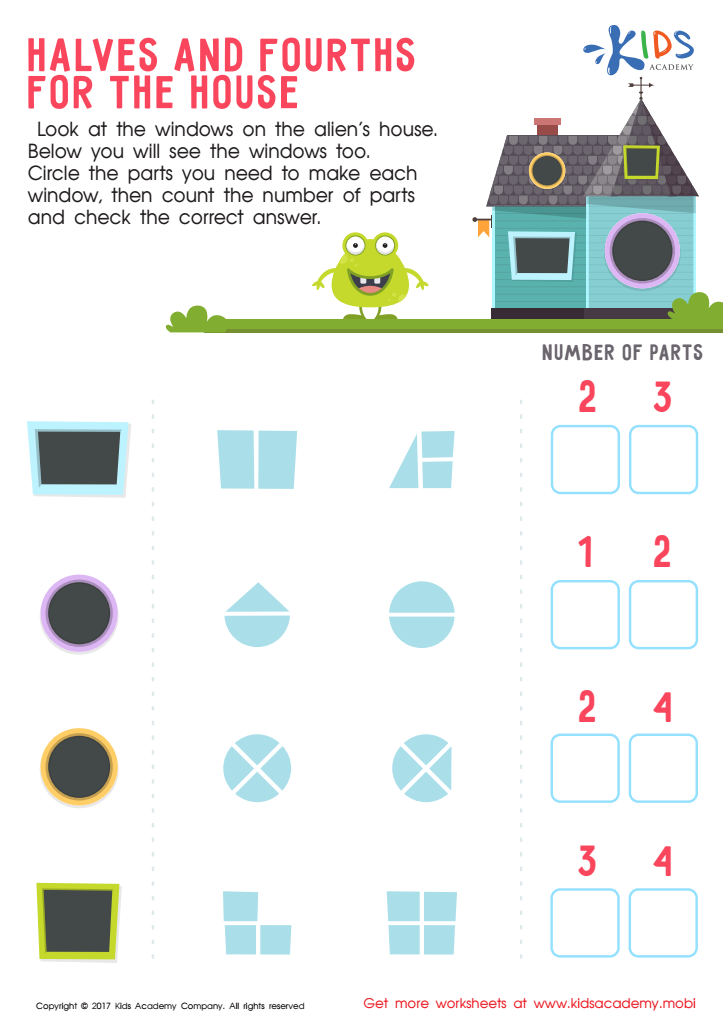

Halves and Fourths for the House Worksheet
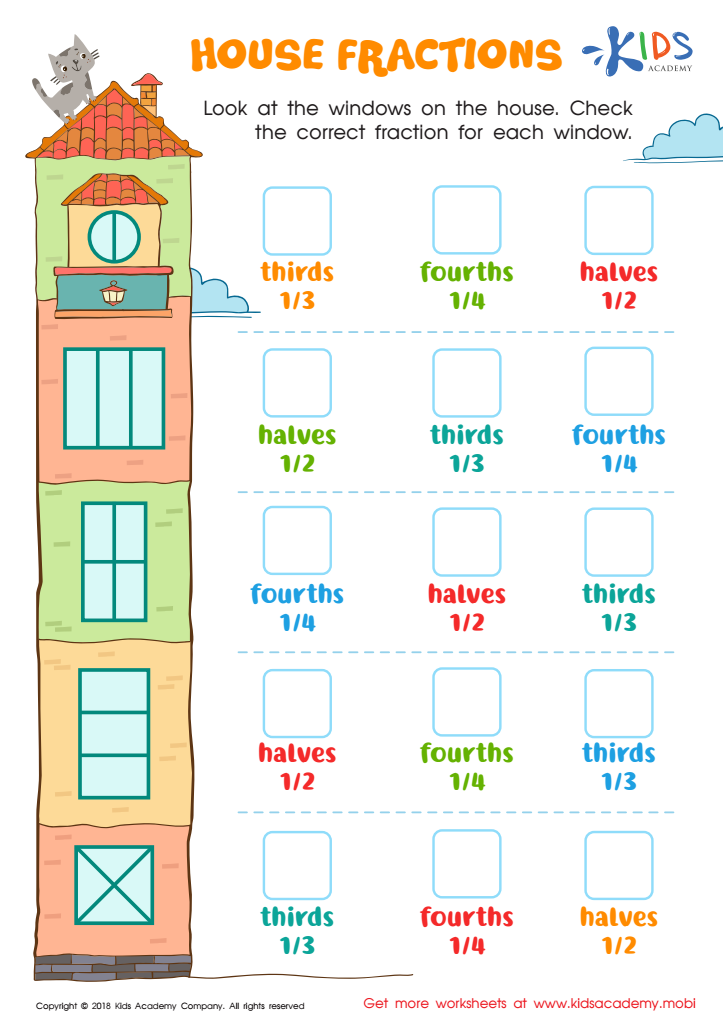

House Fractions Worksheet
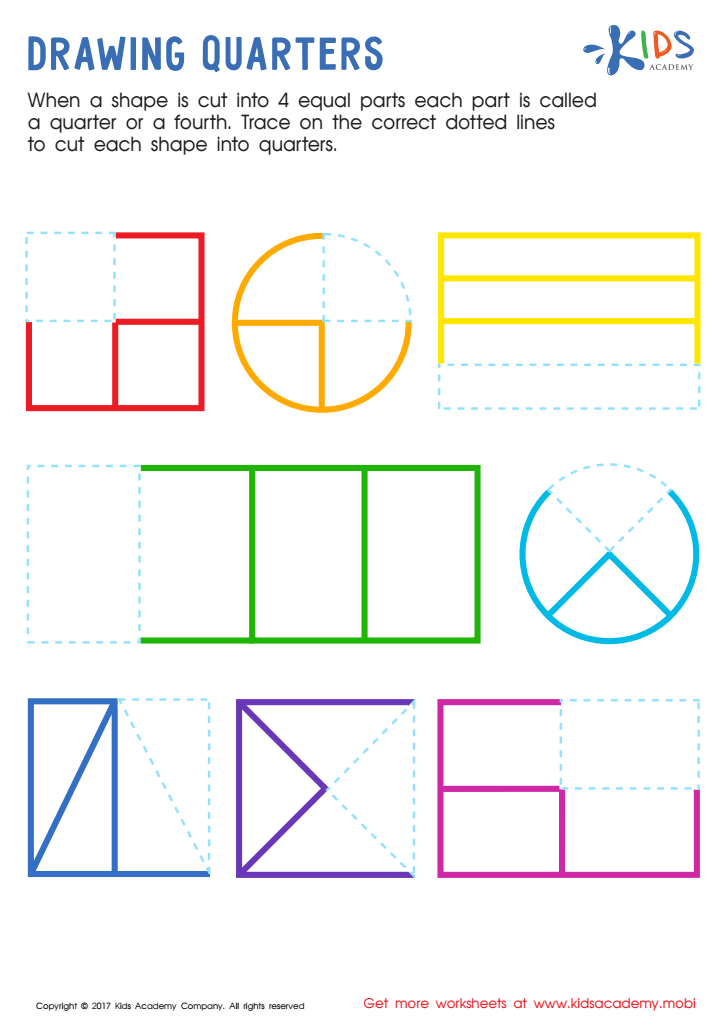

Drawing Quarters Worksheet
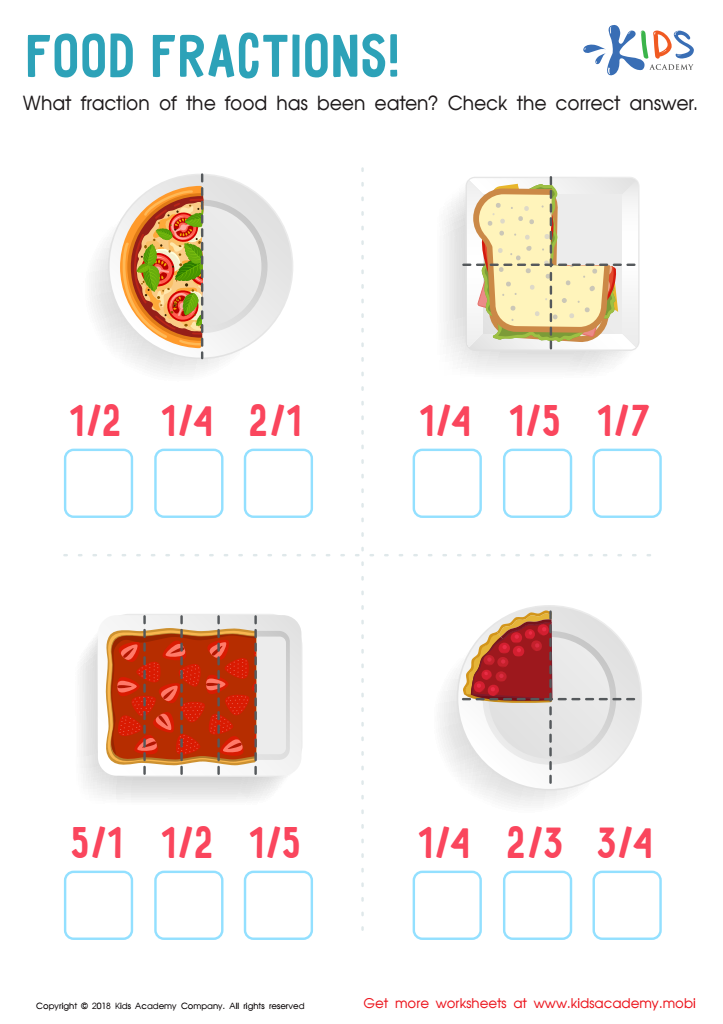

Food Fractions Worksheet
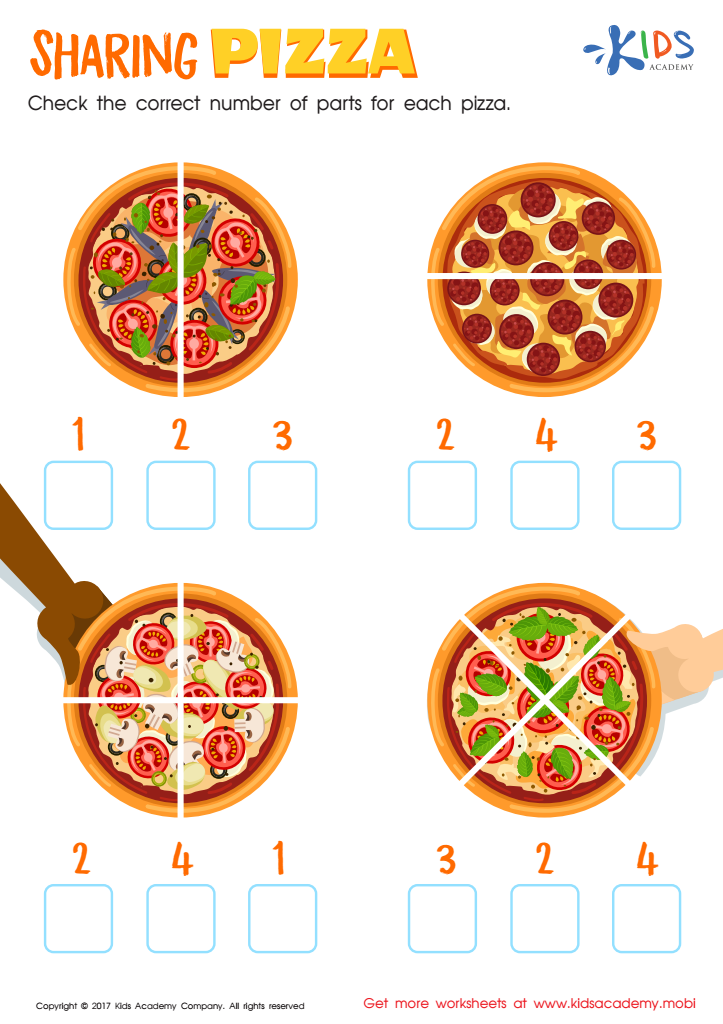

Sharing Pizza Worksheet
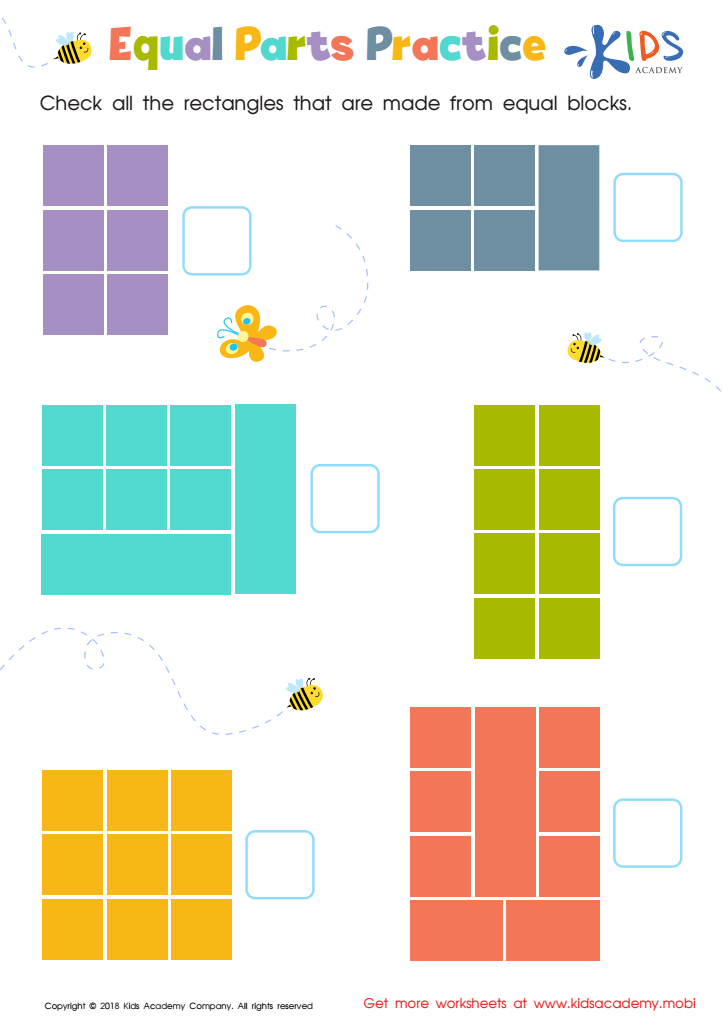

Equal Parts Practice Worksheet
Understanding fractions and geometry is pivotal for young learners aged 5-8 as it forms the foundation of mathematical intuition and critical thinking. At this formative age, children are highly receptive to visual and hands-on learning, making fractions and geometry ideal subjects for building these foundational concepts.
For one, fractions promote an understanding of parts and wholes, which is essential not only in math but in everyday decision-making and problem-solving. Grasping that a whole can be divided into equal parts encourages logical thinking and precision. This understanding can also ease future transitions to more complex concepts like algebra and probability.
Geometry, meanwhile, introduces children to shapes, spatial relations, and basic properties. Recognizing shapes and understanding how they fit together enhances spatial awareness and can improve cognitive abilities related to memory and reasoning. These skills are especially beneficial as they apply across different subjects and real-world situations, aiding in activities from art to sports.
Additionally, introducing these concepts early ensures that children aren’t intimidated by more advanced math later on. It boosts their confidence and promotes a positive attitude towards learning. Therefore, parents and teachers should prioritize teaching fractions and geometry to harness children's natural curiosity and support their holistic development.
 Assign to My Students
Assign to My Students































